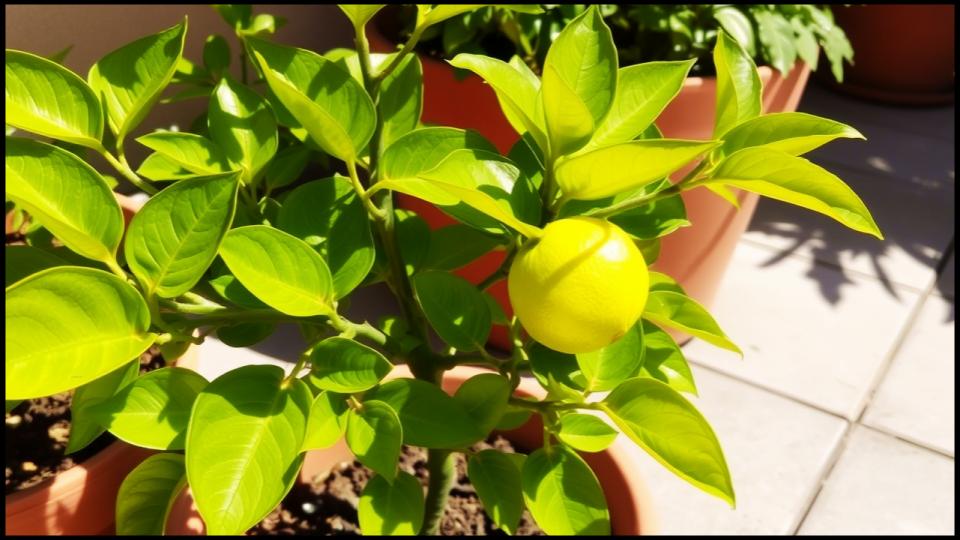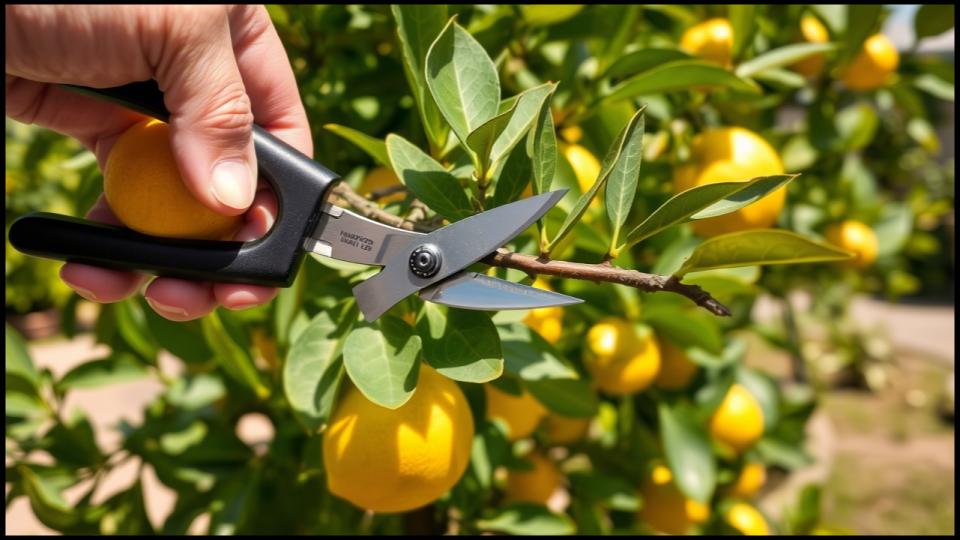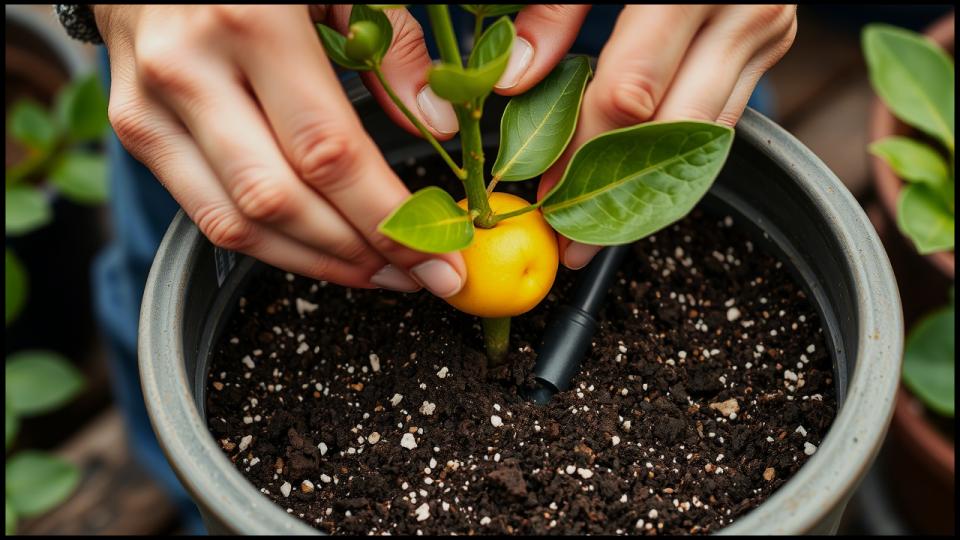
There is a unique and deeply satisfying magic in walking into your own garden to pluck a fresh, fragrant lemon from a tree you grew yourself. The zesty oil on your fingertips, the sun-warmed peel, the promise of the bright, acidic juice inside—it’s a sensory experience that store-bought citrus simply cannot replicate. What if I told you that a single, healthy lemon tree could become the parent to an entire grove in your home or garden? It’s not only possible, but it’s also one of the most rewarding gardening projects you can undertake. This guide will show you exactly how to propagate a lemon tree, ensuring a perpetual harvest of homegrown sunshine for years to come.
Quick Guide: Your First Steps to More Lemons
Here’s the essence of what you need to know to get started:
- Cuttings Are Best: Propagating from lemon tree cuttings creates a clone of the parent tree, guaranteeing the same quality of fruit and a much faster path to your first harvest compared to seeds.
- Timing is Key: Take your cuttings in late spring or early summer when the tree is in a state of active, vigorous growth.
- Humidity is Your Ally: New cuttings need a very humid environment to develop roots since they can’t draw water from the soil yet. A simple plastic bag or dome is the secret to success.
- Patience is a Virtue: Your new lemon tree will take about 4-8 weeks to form roots. Resist the urge to disturb it during this critical time.
Why Propagate a Lemon Tree?
Beyond the simple joy of it, creating new lemon trees from a favorite existing one is wonderfully practical. If you have a Meyer lemon tree that produces the most perfectly sweet and tangy fruit, propagating it ensures you get more of the exact same thing. It’s an incredibly cost-effective way to expand your garden, create beautiful, living gifts for friends and family, or even grow a series of potted lemon trees to bring that Mediterranean feel to your patio.
While you can try growing lemon trees from seed, it comes with a couple of significant caveats. In my experience, this is where many new gardeners are disappointed. A seed from a grocery store lemon will likely grow into a lemon tree, but probably not one that produces the same kind of fruit you enjoyed. Many commercial lemons are hybrids, and their seeds don’t grow “true to type.” Furthermore, a tree grown from seed can take anywhere from 5 to 15 years to produce any fruit at all. Cuttings, on the other hand, are from a mature tree and can start fruiting in as little as 2-3 years.
The Best Time for Propagation
The success of your propagation hinges on timing. The ideal moment to take cuttings is in late spring to early summer. During this period, the tree has produced new growth that has started to mature. Horticulturists call this semi-hardwood—it’s the perfect balance of being young and vigorous enough to sprout new roots, yet firm enough not to rot. The stem should be firm but still flexible enough to bend slightly without snapping.
Gathering Your Tools for Success
Having everything clean and ready before you make the first cut sets you up for a smooth process. Think of it as setting up a proper workstation, just as you would for a favorite recipe.

TOOLS AND MATERIALS BOX
- A Healthy Parent Lemon Tree: Choose a vigorous, disease-free tree that produces delicious fruit.
- Sharp, Sterile Pruning Shears or a Knife: A clean cut prevents disease and damage to both the parent plant and the cutting. I wipe my blades with isopropyl alcohol before and after each use.
- Rooting Hormone: Available as a powder or gel, this significantly increases your success rate by encouraging root development.
- Small Pots (4-6 inches): Ensure they have excellent drainage holes.
- Sterile Potting Medium: A light, airy mix is crucial. A 50/50 blend of peat moss or coco coir and perlite or vermiculite is ideal.
- A Pencil or Dibber: To make a hole in the potting mix for your cutting.
- Clear Plastic Bags or a Propagation Dome: To create a mini-greenhouse environment.
- Water Mister: For maintaining humidity.
How to Propagate a Lemon Tree from Cuttings: A Step-by-Step Guide
This process is a delightful blend of science and art. Follow these steps carefully, and you’ll soon have a new lemon tree to nurture.
Step 1: Select and Take Your Cuttings
Look for a healthy, new branch of growth from the current season. You’ll want a cutting that is about 6 to 8 inches long. Using your sterile shears, make a clean, 45-degree cut just below a leaf node (the small bump on the stem where a leaf grows). It’s best to take a few more cuttings than you think you’ll need, as not every single one may root successfully.

Step 2: Prepare the Cutting for Planting
Once you have your cutting, you need to prepare it for its new life. Carefully snip off all but the top four leaves. This directs the cutting’s energy into making roots instead of supporting excess foliage. If the remaining leaves are very large, you can cut them in half horizontally to reduce moisture loss.
Next, pour a small amount of rooting hormone onto a clean dish. Gently dip the bottom inch of the cutting into the hormone, tapping off any excess. It’s important not to contaminate your main container of rooting hormone by dipping directly into it.
Step 3: Plant Your Lemon Tree Cutting
Fill your pot with the pre-moistened potting mix. Use a pencil to poke a hole in the center, deep enough to accommodate the bottom third of your cutting. This prevents the rooting hormone from being rubbed off as you insert it. Place the cutting into the hole and gently firm the soil around it to ensure good contact.

Step 4: Create a Humid Haven
This is the most critical step for successful lemon tree cuttings. Water the pot lightly. Then, place a clear plastic bag over the entire pot, using stakes or chopsticks if needed to keep the plastic from touching the leaves. This creates the humid environment your cutting needs to survive and thrive. If using a propagation dome, simply place the lid on top.
Place your potted cutting in a warm location that receives plenty of bright, indirect sunlight. A north-facing windowsill or a spot a few feet from a sunnier window is perfect. Direct sun will scorch the cutting.
Caring for Your New Lemon Tree
Your work is mostly done, and now patience takes over. Here’s how to provide the best lemon tree care during this delicate phase.
- Check Moisture: Every few days, briefly open the plastic bag to let in fresh air and check the soil moisture. The soil should remain consistently moist, like a wrung-out sponge, but never soggy. A common mistake I see is gardeners letting the soil dry out completely or keeping it waterlogged, both of which will cause the cutting to fail.
- Watch for Roots: After about 4 to 8 weeks, you can check for root development. Give the cutting a very gentle tug. If you feel resistance, it means roots have formed! Don’t force it.
- Acclimate Slowly: Once your cutting is well-rooted, you need to acclimate it to the less humid air of your home. Start by opening the plastic bag for a few hours a day, gradually increasing the time over a week until the plant is fully adjusted. This process, called “hardening off,” prevents shock.
From a Single Branch to a Lifelong Joy
There is a profound connection that comes from nurturing a plant from a simple cutting into a fruit-bearing tree. You’ve not only cloned a favorite plant but have also participated in a timeless gardening tradition. With these steps, you are well on your way to a sun-drenched patio dotted with beautiful lemon trees of your own making. You’ll have an endless supply for cooking, for sharing, and for those quiet moments in the garden, savoring the simple, elegant pleasure of something you grew yourself.
Read More
Unlock the Secret to Healthier Tomatoes with This Pruning Guide
